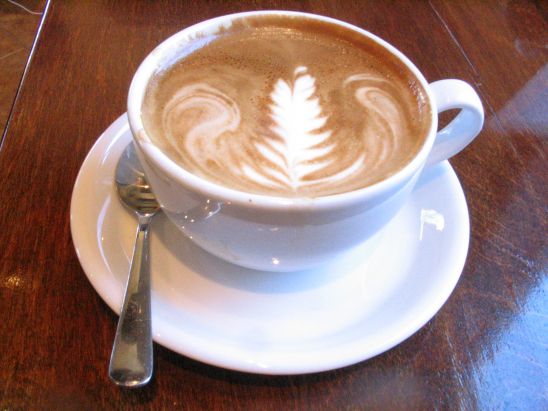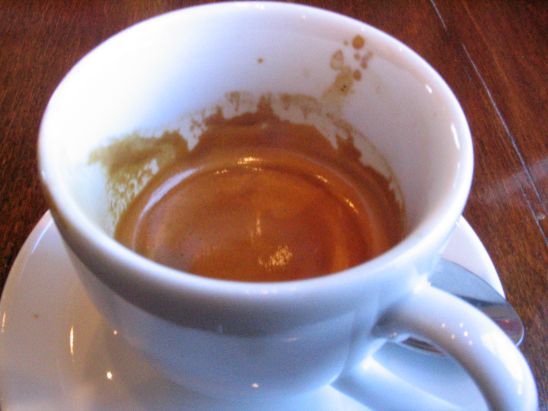In “Mad Flavor,” the author describes his occasional forays from the farm in search of exceptional culinary experiences from small artisanal producers. For the next week or so, Mad Flavor will be reporting from location in Austin, the author’s hometown.
News flash: I’ve found proper espresso in Austin, Texas, home of dozens of cafes. The place is Cafe Medici, at West Lynn and 11th in Clarkesville.
Before I describe it, I’ll make you sit through my pet theory on why it’s getting harder and harder to find great coffee in the U.S.

I have a theory that Starbucks — which has been busily conquering the China market and stepping on Ethiopia’s intellectual property rights — is wrecking U.S. coffee culture.
The argument is paradoxical. In its grand push for ubiquity, the company has brought drinkable — sort of — coffee to exurban shopping malls, supersized interstate-highway filling stations, and other unlikely places.
But the sudden ubiquity of the almost drinkable exerts deadening pressure on the actually-quite-good. Take the case of Austin, Texas, where I grew up, went to college, and spent my post-college-crisis years.
Starbucks and the triumph of the $5 milkshake
First, let’s talk about the banality and inanity of Starbucks coffee “culture.” Not that long ago, John Travolta cocked an eyebrow at the specter of a “$5 milkshake” in Pulp Fiction. Since then, Starbucks has turned that concept into a business valued by Wall Street at a cool $30 billion — about twice the valuation of Ford Motor.
Walk into Starbucks now and you’re confronted with a dizzying array of “latte” drinks featuring pumpkin pie, egg nog, and I’m terrified to think of what all. These revoltingly milky, sugary concoctions — warmed-up $5 milkshakes with a dash of mediocre espresso — would bewilder any patron or barista in the simple Italian coffee bars from which Starbucks ostensibly draws its inspiration.
Unhappily, Starbucks and its dreadful creations seem to have taught Americans what cappuccino means. I was recently at a small coffee bar on University of North Carolina’s Chapel Hill campus. The place pulls a surprisingly good espresso shot, yet the undergrads were all ordering “lattes” featuring stuff like Snicker’s bars. I’m not kidding.
In such a fallen coffee world, the importance of a properly pulled espresso shot from high-quality fresh beans dwindles. Why should they bother doing better, when the Starbucks-educated masses are clamoring to shell out $5 for a sweet milkshake that would overwhelm the subtlety of good espresso anyway?
Here in Austin, I’ve seen the best coffeehouses of my generation succumb to that impeccable logic. I won’t call out names, but cafes that taught me the genius of espresso are now churning out dirty water in fancy demitasse cups.
Starbucks rode to corporate-giant status on the strength of a backlash against dull institutional coffee. Now we need a new backlash against the hegemony of the corporate giant and its dubiosly flavored lattes.
Caffe Medici: manning the ramparts
Here in Austin, Caffe Medici is manning the ramparts of that fight.
(In the ever-important fight against historical amnesia, it’s important to note that Medici’s central Austin neighborhood, Clarkesville, was until the 1950s an African-American enclave. But “market forces,” often backed by government cash, are always pushing “undesirable” elements from the urban core to the periphery, especially when well-heeled whites rediscover the beauty of urban living.
Now Clarkesville ranks as one of Austin’s trendiest, “funkiest” neighborhoods — and, like much of this self-conciously “cool” and liberal city, it’s pretty racially and economically homogenous. Now a comfortable hub of tony West Austin, Clarkesville bears no visible trace of its history as a black neighborhood.)
The espresso at Medici, while a tad light in body, is lavishly blanketed in golden-brown crema, subtly sweet, with a finish that sticks with you for minutes after you’re done. In a word, it’s proper, correct.
And the cappuccino is done right, too. Contra Starbucks, cappuccino does not mean equal parts hot milk, foam, and espresso. In a well-made cap, the barista steams the milk and then carefully, swirling and tapping the milk pitcher, reincorporates the foam into the hot milk, creating a creamy, cloud-like milk-foam emulsion. (The milk must be whole; a “skim cap” is a crime.)
In a good cap, the milk doesn’t overwhelm the espresso; the milk provides a sweet, creamy canvass against which the espresso shines.
Medici, God bless it, serves just such a cappuccino.



